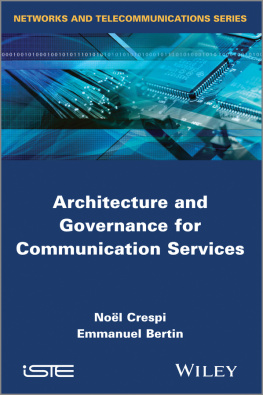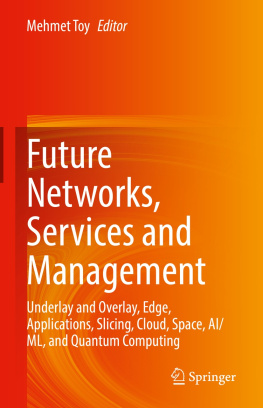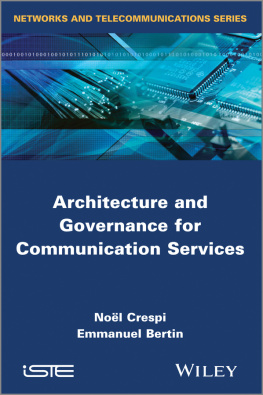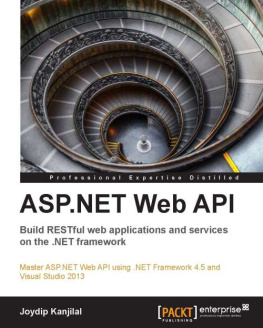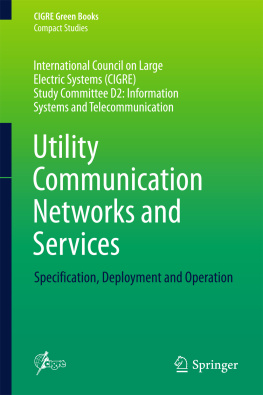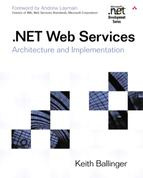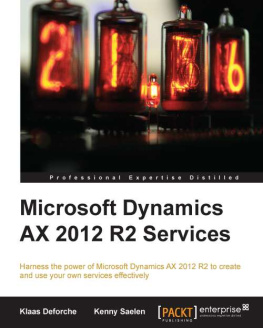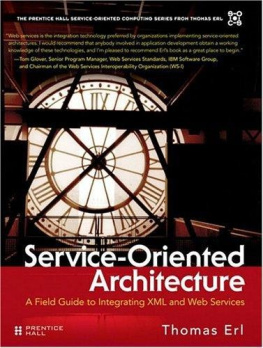Noël Crespi - Architecture and Governance for Communication Services
Here you can read online Noël Crespi - Architecture and Governance for Communication Services full text of the book (entire story) in english for free. Download pdf and epub, get meaning, cover and reviews about this ebook. year: 2013, publisher: Wiley-ISTE, genre: Romance novel. Description of the work, (preface) as well as reviews are available. Best literature library LitArk.com created for fans of good reading and offers a wide selection of genres:
Romance novel
Science fiction
Adventure
Detective
Science
History
Home and family
Prose
Art
Politics
Computer
Non-fiction
Religion
Business
Children
Humor
Choose a favorite category and find really read worthwhile books. Enjoy immersion in the world of imagination, feel the emotions of the characters or learn something new for yourself, make an fascinating discovery.
- Book:Architecture and Governance for Communication Services
- Author:
- Publisher:Wiley-ISTE
- Genre:
- Year:2013
- Rating:5 / 5
- Favourites:Add to favourites
- Your mark:
Architecture and Governance for Communication Services: summary, description and annotation
We offer to read an annotation, description, summary or preface (depends on what the author of the book "Architecture and Governance for Communication Services" wrote himself). If you haven't found the necessary information about the book — write in the comments, we will try to find it.
Communication services are evolving at an unprecedented rate. No longer limited to interpersonal vocal communication, they now integrate functions such as address books, content sharing and messaging. The emergence of social networks which may also include these features is an important element of this transformation. Content services are becoming flagship services themselves, and are sometimes paired up with conversation services. The boundaries between different services are becoming less and less distinct. This book meets the need for a better understanding of communication services, and for a general framework of their description. A detailed overview on service architecture in the Telco, Web and IT worlds is presented, offering a roadmap with explanations on how to improve the architecture and governance of communication service architectures by exploiting the syntax and semantics that are common to different services is clearly outlined. This book also responds to recurring questions about service design, such as the functional scope of enablers or SOA (Service Oriented Architecture) services, the relevance of service composition to the user and collaboration between different services in a converged environment. Many concrete examples from telecoms service providers operations illustrate these concepts.
Contents
1. Describing Service Architectures.
2. Convergence of Service.
3. Building an Architectural Framework for Telecom Services.
4. Modeling and Case Study.
5. Organizational and Software Applications.
About the Authors
Emmanuel Bertin is senior service architect at Orange Labs in France. He is the author of more than 40 research papers, and holds more than 10 patents in the area of communication services.
Nol Crespi worked at Bouygues Telecom, France Telecom R&D, and then at Nortel Networks where he led the Telephony Programme. He is currently Professor and Head of the Service Architecture Laboratory at Institut Mines-Telecom, Telecom SudParis in France and is the author/co-author of more than 160 research papers and 140 contributions in standardization.
Noël Crespi: author's other books
Who wrote Architecture and Governance for Communication Services? Find out the surname, the name of the author of the book and a list of all author's works by series.

